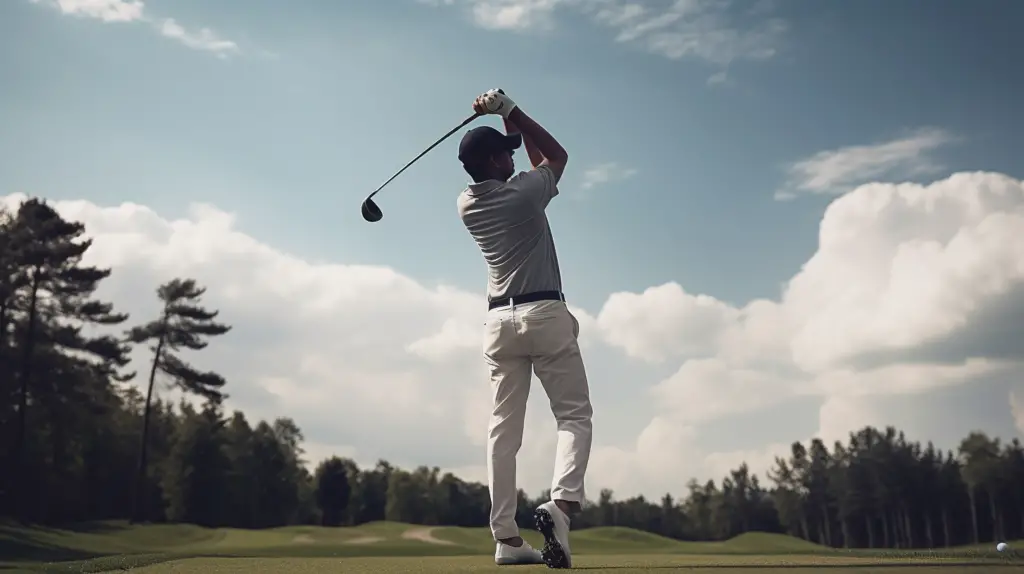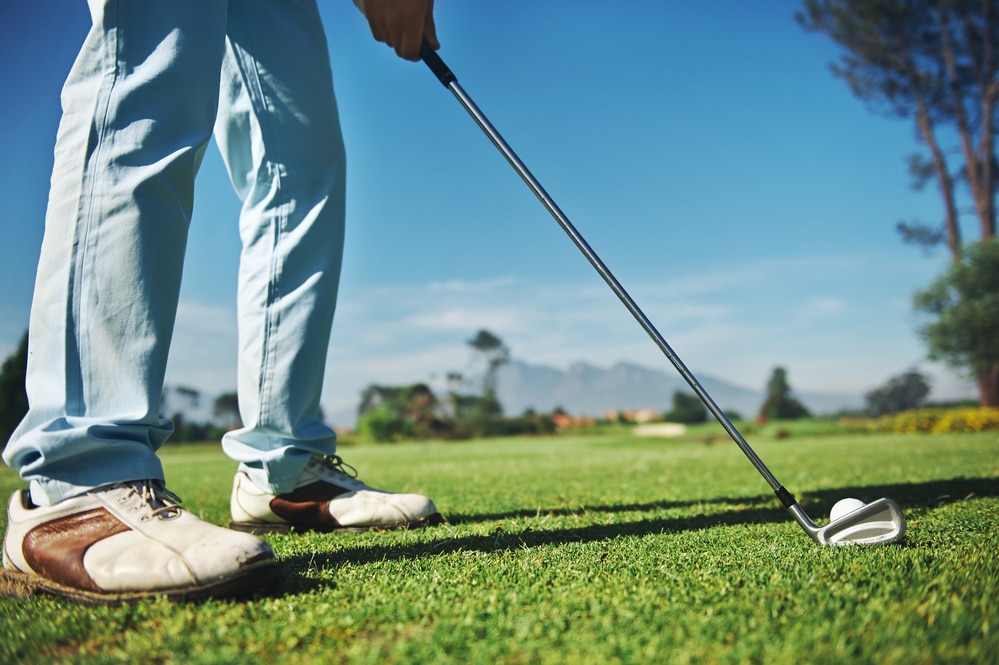Last Updated on November 13, 2023
Golf is a sport of precision and finesse, and hitting a golf ball with an iron requires both. Knowing the basics of how to hit a golf ball with an iron can make all the difference in your game. From choosing the right club to aiming for accuracy, we’ll go through everything you need to know about hitting that perfect shot – without any exclamation points. So let’s get started on learning how to hit a golf ball with an iron so you can start improving your scorecard today.
Table of Contents:
Choose the Right Club
When selecting a club, consider the distance from the ball to the target and any obstacles in between. A driver or fairway wood will be most effective when hitting off of a tee box on an open fairway with no obstructions. The loft angle of these clubs helps get maximum distance out of your swing while keeping the ball low enough to avoid trees or other hazards.
For shorter distances, irons are usually preferred over woods because they provide more control over trajectory and spin rate due to their lower loft angles. When playing into a green with bunkers or water hazards nearby, use an iron with less loft, such as a 4-iron or 5-iron, instead of higher lofts like 7-irons and 9-irons, which could send your ball too high into trouble areas.
Wedges are primarily used around greens, but depending on conditions such as wind speed and direction, along with terrain features like hillsides or sand traps, they can also be beneficial when approaching from long distances away. Wedges come in various lofts, including pitching wedges (46°), gap wedges (50° – 54°), sand wedges (56° – 58°) and lob wedges (60° – 64°). The pitching wedge should be employed for full swings, while the gap/sand/lob wedges should only be utilised within 100 yards of the green, where accuracy is paramount due to tight lies caused by mounds, bunkers etc.
Finally, putters are designed specifically for short-range strokes typically made on putting greens where accuracy matters more than power since there is not much room for error at this point in play since you are so close already. Putters come in all shapes and sizes, from traditional blade designs up to mallet styles that offer more forgiveness if you do not quite hit them perfectly straight every time.
Aim for Accuracy
The first step in aiming accurately is understanding the target line. This is the imaginary line that runs from the ball through your intended target on the green. Visualising this line will help you set up properly for each shot and keep your focus on where you want it to go. It’s also important to remember that any misalignment can cause an inaccurate shot, so take time before each swing to make sure everything is lined up correctly with your feet, hips, shoulders, eyes, and clubface all pointing towards the target line.
Alignment sticks or rods are great tools for helping golfers stay aligned during their swings. These lightweight sticks come in pairs and can be placed on either side of your body or behind the ball as visual reminders of where you should be aiming throughout your swing sequence. They’re easy to carry around with you when playing a round of golf too.
Another helpful tool for improving accuracy is using rangefinders or GPS devices while playing a course. Rangefinders measure distances between two points (such as between yourself and the pin) which helps golfers determine how far they need to hit their shots based on their clubs’ average yardage per club type (e.g. driver = 250 yards). GPS devices provide even more detailed information, such as elevation changes which can affect trajectory when hitting greenside bunkers or water hazards etc., making them invaluable pieces of equipment for experienced players looking for an edge over their competition.
Finally, practice makes perfect. Make sure you spend plenty of time at driving ranges working on different types of shots so that when it comes time for tournament play, you’ll have confidence in knowing exactly what kind of shot needs taking, depending on what lies ahead. With enough practice under your belt – combined with proper alignment techniques and tools – there is no reason why anyone should not be able to achieve greater accuracy out on the course.
Swing Away

Swinging an iron is a key part of golf, and it’s important to get the basics right. To generate power and control while swinging an iron, you need to focus on your tempo, timing and follow-through.
Tempo
A good swing should be smooth and consistent throughout. Try to maintain a steady rhythm as you move through the backswing, downswing and follow-through. It can help to count out loud or in your head as you practice swings – this will help ensure that your tempo remains even from start to finish.
Timing
Good timing is essential for accurate shots with any club – but especially with irons. As you begin the downswing phase of your swing, ensure that all parts of your body are working together in unison to reach their peak positions at exactly the same time. This will give you maximum power without sacrificing accuracy or consistency.
Follow Through
The most important part of any golf shot is the follow-through; this is where all the power comes from. Make sure that after impact with the ball, your arms remain extended until they are parallel with the ground (or higher). This ensures that all energy generated during the swing has been transferred into momentum for the maximum distance of each shot.
Frequently Asked Questions
How should an iron swing be for beginners?
Golf is a complex game that requires patience and practice to master. When it comes to the iron swing, beginners should focus on keeping their arms close to their body throughout the entire motion. Start by taking your stance with feet shoulder-width apart and knees slightly bent. As you take your backswing, keep your arms straight while turning your shoulders away from the target. On the downswing, shift your weight onto your left side (for right-handed golfers) as you rotate through with a full follow-through of both arms and hands at impact. Finally, finish in balance with all parts of the body facing towards the target for maximum accuracy and distance.
Where should I hit my golf ball with an iron?
When hitting a golf ball with an iron, the most important factor is ensuring you are striking down on the ball. This means that your hands should be slightly ahead of the club head at impact, and your weight should be shifted towards your front foot. Additionally, aim for a spot just before the ball to get maximum compression and distance from each shot. Finally, make sure to keep your wrists firm throughout the swing to maintain control over where you want the ball to go. With these tips in mind, you will have no problem finding success when using an iron.
Conclusion
In conclusion, hitting a golf ball with an iron can be tricky, but it’s definitely doable. With the right basics, club selection and accuracy in mind, you’ll be able to hit that golf ball with an iron like a pro. So don’t let the fear of failure stop you from improving your game – keep practising, and soon, you’ll have mastered how to hit a golf ball with an iron.



